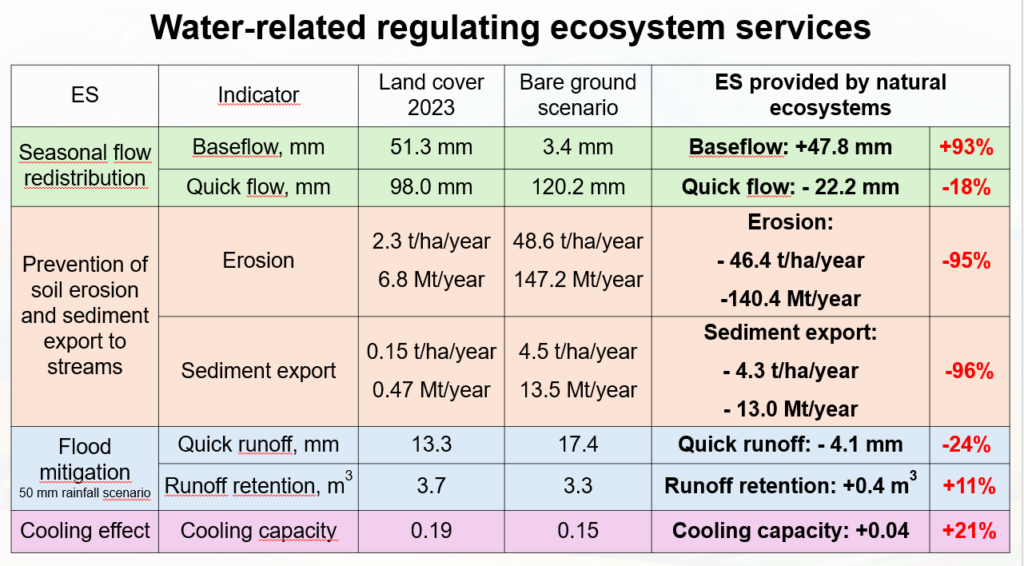3.1. Regulating ES
3.1.A. Water-related regulating ES
3.1.A.1. Methodology of assessment of water-related ES
3.1.A.2. Seasonal water flow regulation (InVEST Seasonal Water Yield) →
3.1.A.3. Prevention of soil water erosion and ensuring runoff quality (InVEST Sediment Delivery Ratio) →
3.1.A.4. Flood risk mitigation (InVEST Urban Flood Risk Mitigation) →
3.1.A.5. Сooling effect of terrestrial ecosystems (InVEST Urban Cooling) →
3.1.A.6. General issues of assessment of water-related ES →
3.1.B. Carbon storage in soil and tree biomass →
3.1.C. Pollination (in progress)
3.1.D. Regulating ESs of Protected Areas →
Publications:
Bukvareva, E., Kazakov, E., Arakelyan, A., & Asatryan, V. (2025). Assessment and Mapping of Water-Related Regulating Ecosystem Services in Armenia as a Component of National Ecosystem Accounting. Sustainability, 17(17), 8044. DOI:10.3390/su17178044
PDF
Please see the corrected data on ES supply-use balance on the website: for SWY and SDR.
Kazakov, E. and Bukvareva, E.: Modeling ecosystem services in Armenia using InVEST: a scenario-based approach with NextGISWeb integration for public awareness and engagement, Int. Arch. Photogramm. Remote Sens. Spatial Inf. Sci., XLVIII-4/W13-2025, 149–155, https://doi.org/10.5194/isprs-archives-XLVIII-4-W13-2025-149-2025, 2025.
PDF
Regulating ES provide good conditions for provisioning ES, for agriculture, and for recreation. Regulating ES related to atmosphere, soil and water are closely connected between each other. For example, preventing water and wind erosion of soils simultaneously ensures the quality of surface runoff and air quality, reducing the amount of dust. These relationships facilitate physical valuation of ES, since the same indicators and maps can be used to evaluate different services. When monetary valuing, this must be taken into account to avoid double counting.

An example of the interaction of soil-protective and water-regulating services performed by vegetation: on the right, the site is protected from overgrazing, has developed grass and soil covers, which also retain water, allowing woody vegetation to develop there as well. On the left, the site is almost devoid of vegetation and soil and is being dried out (neighborhood of Yerevan, Kasakh village, January 2023).

Table 1. The estimates we received for the four ES for the whole of Armenia (for more details, see the sections of the relevant services)
